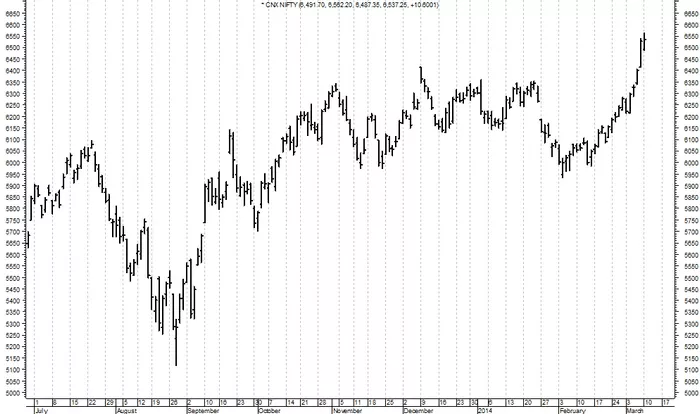Investing in the stock market can be complex, especially with the numerous categories of stocks available to investors. Among these categories, midcap stocks play a crucial role, often attracting those who seek a balance between risk and return. But what exactly are midcap stocks? In this article, we will explore the definition of midcap stocks, their characteristics, benefits, and risks, as well as how they compare to other stock categories. This comprehensive guide aims to provide a clear understanding of midcap stocks and their place in an investment portfolio.
Understanding Stock Market Capitalization
Before diving into midcap stocks, it is essential to understand the concept of market capitalization. Market capitalization, or “market cap,” is the total market value of a company’s outstanding shares of stock. It is calculated by multiplying the current stock price by the total number of outstanding shares. Market capitalization provides insight into the size of a company and is a critical factor in categorizing stocks into large-cap, midcap, and small-cap.
Types of Market Capitalization
Stocks are generally divided into three main categories based on market capitalization:
Large-Cap Stocks: Companies with a market capitalization of $10 billion or more. These are typically well-established firms with a significant market presence, such as Apple, Microsoft, and Johnson & Johnson.
Midcap Stocks: Companies with a market capitalization between $2 billion and $10 billion. These companies are usually in a growth phase, offering more potential for appreciation than large-cap stocks but with more stability than small-cap stocks.
Small-Cap Stocks: Companies with a market capitalization of less than $2 billion. Small-cap stocks are often newer companies with high growth potential but come with higher risk.
See Also: What Are Cyclical Stocks?
What Are Midcap Stocks?
Midcap stocks refer to the shares of companies with a market capitalization ranging from $2 billion to $10 billion. These companies are typically in a stage of growth where they have moved beyond the risks associated with start-ups but are not yet as large and established as large-cap companies. Midcap stocks are often seen as offering a “middle ground” for investors, combining elements of both growth potential and relative stability.
Characteristics of Midcap Stocks
Growth Potential: Midcap companies are often expanding their operations, entering new markets, or developing new products. This growth potential can lead to higher returns compared to large-cap stocks.
Stability: While not as stable as large-cap stocks, midcap stocks generally offer more stability than small-cap stocks. These companies have often already proven their business models and have a more established market presence.
Volatility: Midcap stocks can be more volatile than large-cap stocks, reflecting their growth phase. However, this volatility is typically lower than that of small-cap stocks.
Industry Representation: Midcap stocks are found across various industries, including technology, healthcare, consumer goods, and industrials. This diversity allows investors to access different sectors through midcap investments.
Benefits of Investing in Midcap Stocks
Investing in midcap stocks can offer several advantages, making them an attractive option for many investors. Here are some key benefits:
Balanced Risk and Return
Midcap stocks provide a balance between the lower risk associated with large-cap stocks and the higher growth potential of small-cap stocks. This makes them suitable for investors seeking moderate risk with the possibility of significant returns.
Growth Opportunities
Many midcap companies are in the expansion phase, offering strong growth potential. Investors can benefit from this growth as these companies increase their market share, revenue, and profits.
Diversification
Including midcap stocks in an investment portfolio can enhance diversification. Midcap companies often operate in sectors that may be underrepresented by large-cap stocks, allowing investors to spread their risk across different industries.
Less Coverage
Midcap stocks typically receive less coverage from analysts and the media compared to large-cap stocks. This can create opportunities for investors to discover undervalued stocks before they attract broader attention.
Risks of Investing in Midcap Stocks
While midcap stocks offer numerous benefits, they also come with certain risks that investors should consider:
Market Volatility
Midcap stocks are more susceptible to market fluctuations than large-cap stocks. Economic downturns, industry-specific issues, or company-specific problems can lead to significant price volatility.
Limited Resources
Compared to large-cap companies, midcap companies may have fewer financial resources, making them more vulnerable to economic challenges or competitive pressures. This can impact their ability to sustain growth or weather downturns.
Liquidity Concerns
Midcap stocks may have lower trading volumes compared to large-cap stocks, which can lead to liquidity issues. This means it might be more challenging to buy or sell shares without affecting the stock price.
Evolving Business Models
As midcap companies grow, they may need to adapt their business models to changing market conditions. This evolution can introduce uncertainty, as not all companies succeed in making the necessary adjustments.
How Midcap Stocks Compare to Other Stock Categories
To better understand midcap stocks, it’s helpful to compare them to large-cap and small-cap stocks. Each category offers unique characteristics and appeals to different types of investors.
Midcap vs. Large-Cap Stocks
Risk and Return: Large-cap stocks are generally considered safer investments due to their stability and established market presence. However, they may offer lower growth potential compared to midcap stocks. Midcap stocks strike a balance by providing more growth potential with moderate risk.
Volatility: Large-cap stocks tend to be less volatile than midcap stocks, reflecting their established nature. Midcap stocks may experience more price fluctuations due to their growth phase.
Dividend Payments: Large-cap companies are more likely to pay regular dividends, providing a steady income stream for investors. Midcap companies may reinvest profits into growth, resulting in lower or no dividends.
Midcap vs. Small-Cap Stocks
Risk and Return: Small-cap stocks offer the highest growth potential but also come with the highest risk. Midcap stocks provide a middle ground, offering growth opportunities with less risk compared to small-cap stocks.
Volatility: Small-cap stocks are more volatile than midcap stocks, reflecting their smaller size and greater susceptibility to market changes. Midcap stocks are generally more stable, offering a smoother ride for investors.
Liquidity: Small-cap stocks often have lower liquidity, making them harder to trade. Midcap stocks usually have better liquidity, making it easier for investors to enter and exit positions.
How to Invest in Midcap Stocks
Investing in midcap stocks can be done through individual stock selection, mutual funds, or exchange-traded funds (ETFs). Each approach has its advantages and considerations:
Individual Stock Selection
Investors can choose specific midcap stocks based on their research and analysis. This approach offers the potential for high returns but requires significant time and effort to identify promising companies and monitor their performance.
Mutual Funds
Mutual funds pool money from multiple investors to invest in a diversified portfolio of midcap stocks. This option provides instant diversification and professional management, making it suitable for investors who prefer a hands-off approach.
Exchange-Traded Funds (ETFs)
ETFs are similar to mutual funds but trade on stock exchanges like individual stocks. Midcap ETFs offer diversification and flexibility, allowing investors to buy and sell shares throughout the trading day. They typically have lower fees compared to mutual funds.
Conclusion
Midcap stocks offer a unique blend of growth potential and stability, making them an attractive option for many investors. They provide a middle ground between the safety of large-cap stocks and the high risk and reward of small-cap stocks. However, investing in midcap stocks is not without risks, including market volatility and liquidity concerns.
For investors seeking to balance risk and return in their portfolios, midcap stocks can be a valuable addition. Whether investing directly in individual stocks or through mutual funds and ETFs, midcap stocks offer opportunities for growth while maintaining a level of stability that appeals to a broad range of investors.
Before investing, it’s essential to conduct thorough research and consider your risk tolerance, investment goals, and time horizon. By understanding the characteristics, benefits, and risks of midcap stocks, you can make informed decisions that align with your financial objectives.
[inline_related_posts title=”You Might Be Interested In” title_align=”left” style=”list” number=”3″ align=”none” ids=”3406,3409,3402″ by=”categories” orderby=”rand” order=”DESC” hide_thumb=”no” thumb_right=”no” views=”no” date=”yes” grid_columns=”2″ post_type=”” tax=””]



























